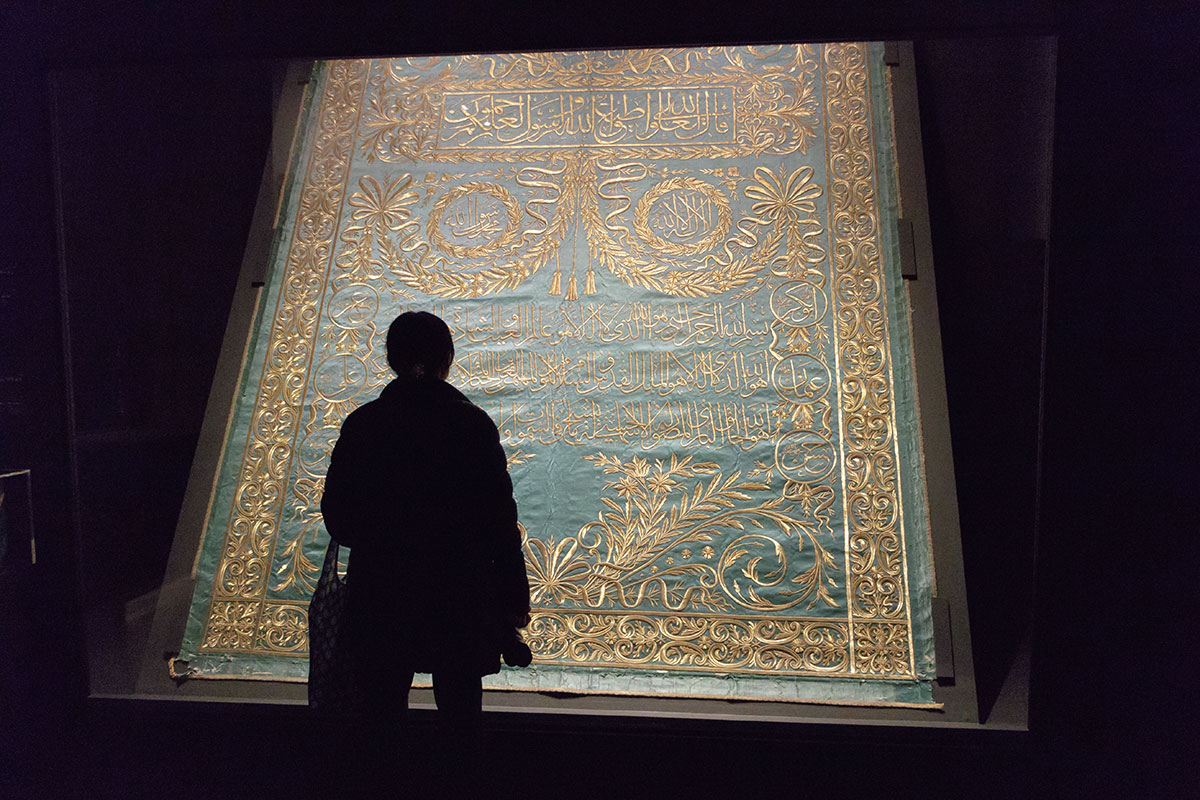
Madina King Abdulaziz Library Collection
"Treasures of Arabia – Kingdom of Saudi Arabia" is held at the Tokyo National Museum and the Keio Hall from January 23 (Tue) to March 18 (Sun) in 2018. Since a press coverage was held on January 22, I will tell you the situation.
As the place of origin of Islam, the Kingdom of Saudi Arabia, the hometown of Arab people 's heart. In modern times this place known as one of the world's leading oil producers is a bridge of civilizations people traveling in the east and west of the continent, was the center of cultural exchange.
There are important trade routes more than ancient times, and the civilizations thrived one after another. Many ruins and artifacts remained on this Arabian Peninsula, and now the fertility of the culture and civilization of the Kingdom of Saudi Arabia with the history of thousands of years I am telling you.
"Arabian Way – The treasure of the Kingdom of Saudi Arabia" will release the treasure of Saudi Arabia, which shows its dynamic history and culture for the first time in Japan. Traveling through about 400 valuable cultural assets, such as Asia's first stoneware over a million years ago, humanoid stone pole set up in the desert 5000 years ago, excavated items from Hellenistic times and Roman era ancient cities The way to Arabia.
■ Exhibit composition
Chapter 1 Humanity, the way to Asia
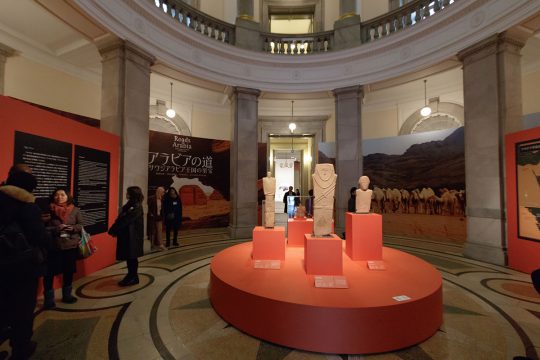
Venue entrance. Attention also to the beautiful architectural style of Keio Hall

Inside the exhibition room reminiscent of marble palace
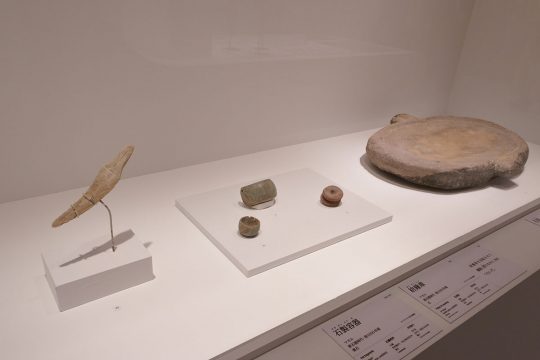
It is the place of Arabia which imagines the endless desert landscape, but the Arabian Peninsula of the Paleolithic Age is thought to have spread out a completely different view from the present age. There are lakes and rivers in the wide prairie, the animals are eating grass and are swarming … that was just "green Arabia" . A settlement society that runs agriculture and livestock eventually spread, and in the vicinity there is a group that performs hunting and nomadism.
In chapter 1, we will display mainly the relics of the Neolithic era of the Arabian Peninsula and invite viewers to the dawn of Arabic civilization.
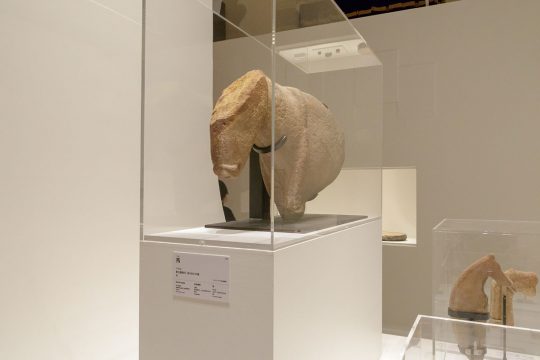
Ma Neolithic Age · Before 6500 Birth of the National Museum of Saudi Arabia
An animal-shaped stone statue excavated by locals at Makal in southern Saudi Arabia. It is regarded as an image representing a horse wearing a band on the neck and valuable data that overturns the history of domestication of domestication has attracted attention.
Chapter 2 The Way to Meet Civilization
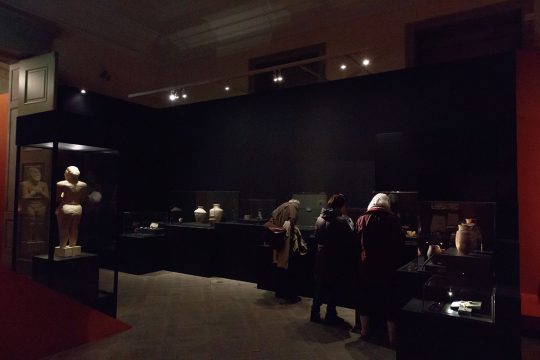

About 2,500 years before the city civilization was established in Mesopotamia, the Arabian Gulf became a relay point connecting the Mesopotamian civilization and the Indus civilization, becoming a "way" of maritime trade. The clay board document excavated in Mesopotamia shows how the resources collected from the surrounding areas, such as wood and copper, were brought to Mesopotamia via the coastal area "Dimrun" .
In this chapter, various excavated items related to this Durun are exhibited.
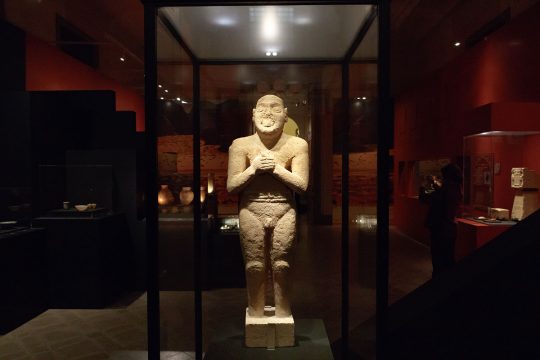
A man praying before 2900 to 2600 in Saudi Arabian National Museum
A man in a shaved state is holding his hands in front of his chest. In the expression seen in Mesopotamian art at the time of the formation of the city civilization, it is said to be a "pose of prayer". There are many similar stone statues excavated in Mesopotamia about 2 to 30 cm, but in this work there is a unique expression such as its huge and lower body of naked.

Before the stone container around 2500-2000 Collection of the Saudi Arabian Museum

A container made of elaborate patterned chlorite rock, which is said to have a production base in Iran now. The entangling two serpents are motifs carved and liked then. I feel somewhere religious and magical elements.
Chapter 3 The path of fragrance
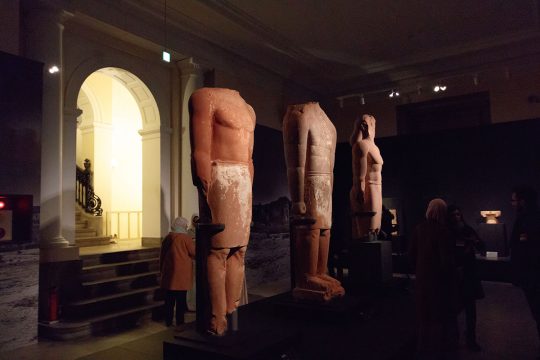
Male statue In the 4th or 3rd century BC Museum of King and Saud University Museum
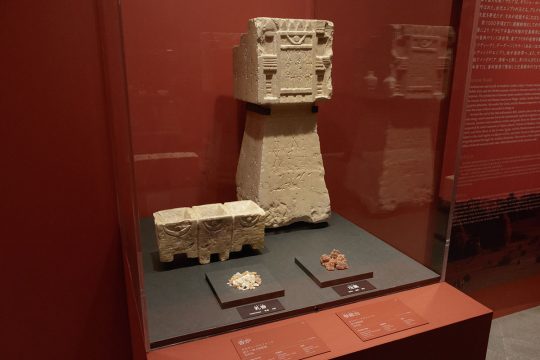
Dedication stand · Censer around the 1st century King · Saoud University Museum Collection

Statue of dromedary bronze and bronze statue
Resin fragrance, such as frankincense and myrrh, produced in the southwestern part of the Arabian Peninsula, was prized in the ancient world, and South Arabia that accumulated wealth as a production area was called " Arabia of happiness" . In order to acquire perfume, the king of the world dreamed of the Arabic rule, so that the world Arab and petroleum countries today ties a relationship with modern times.
Also, as the use of dromedary as a transport animal expands around 1000 years ago, the inland trade city of Arabia has made remarkable progress due to caravan trading of perfume. The 3rd chapter showing exhibits of trade cities prospering in perfumery trade boasts an overwhelming volume and can be said to be whitebrows of this exhibition.
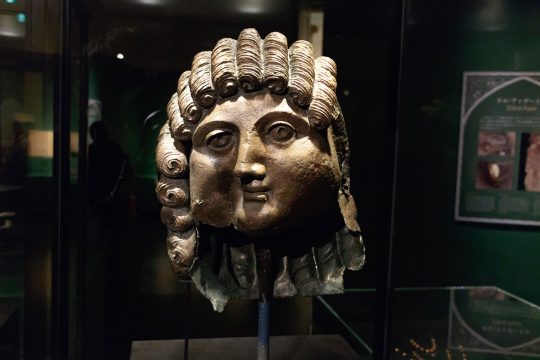
Men's Head 1 to 2 centuries Between King · Saoud University Museum Collection
Karjat Alpha, who was the base of a caravan shop connecting various regions. Located in the southern part of the Arabian Peninsula, this oasis city called himself "a city of paradise" and proudly prosperous. This is a figure of people excavated from that Kalyat alphau. The loosely curled hair and neat facial features clearly show the influence of the statues of the Greek-Roman era and make us feel the character as a trade city.

Funerary goods excavated from Tel Asilly (in the National Museum of Saudi Arabia)
A number of golden accessories that were buried as a 6-year old girl's burial. It shows that there were very wealthy people surrounded by household goods treated with gold and precious stones in this place.
Chapter 4 Pilgrimage Road

Tombstones engraved with Arabic letters stand in chronological order
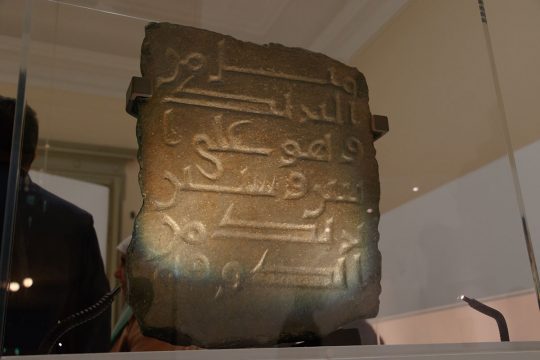
Milestone from Kufa to Makka Late 8th century Saudi Arabian National Museum
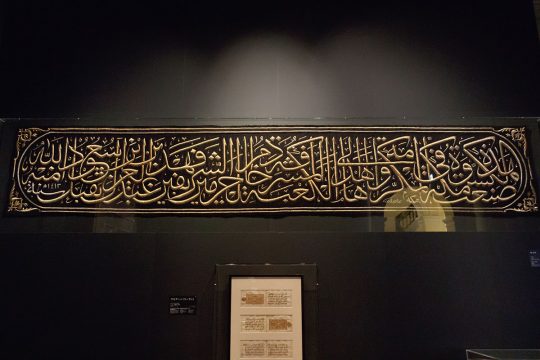
Kiswa 1992 Saudi Arabian National Museum Collection
From chapter 4 we will step into the world of Islam. Muslim, which the Prophet Muhammad spoke, reached Central Asia in the Umayyan era and a vast area benefited from it. The enormous pilgrims visited Makka and Madinah which are two major cities, so the successive caliphs worked on facilities such as accommodation facilities and water supply facilities, and the pilgrimage road developed greatly as a commercial road .
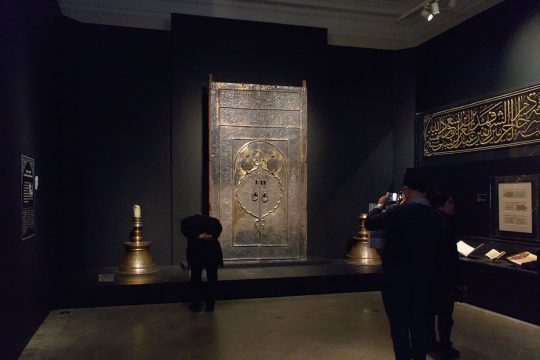
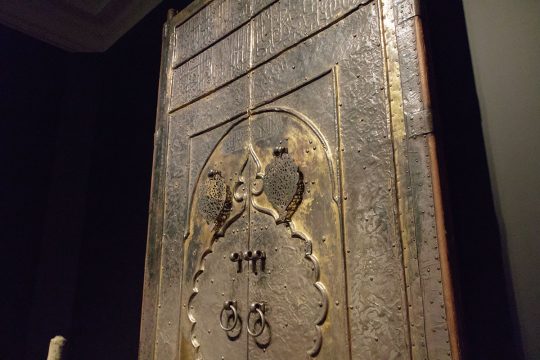
Door of Kaaba Temple Ottoman era Collection of Saudi Arabian national museum
Ottoman Sultan, the door of the Kaaba Temple established by Murat IV. A heavy metal door creates a majestic atmosphere. It is a real door that was actually used until the late 1930s.
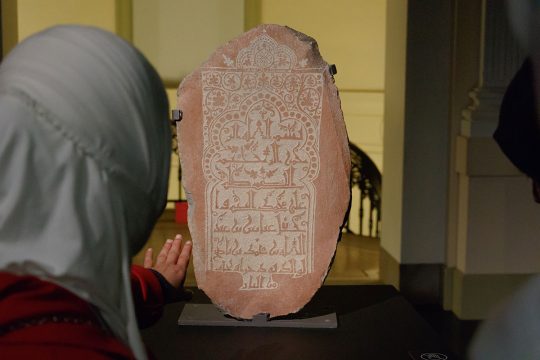
The gravestone of Abdullah's son Abbas 9th century Saudi Arabian Museum Collection
For many of us, Muslims are unfamiliar, but the beautiful Arabic scripts and the beauty of religious architecture evokes an emotion over our differences in religion on our minds. Muslim crosses borders of national borders and ethnic groups. It may be what the prophet Muhammad wanted before life.
Chapter 5 Road to the Kingdom
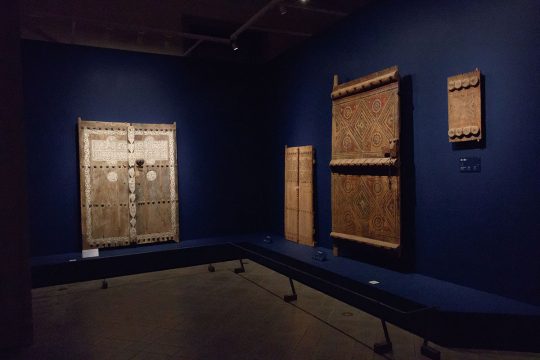
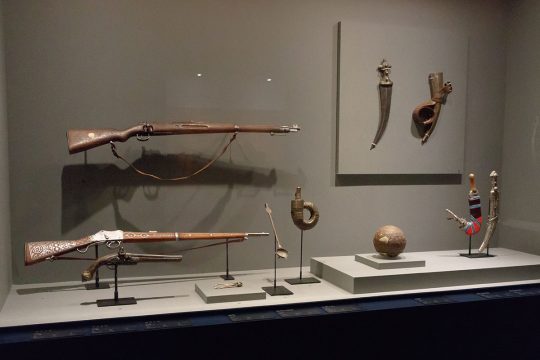
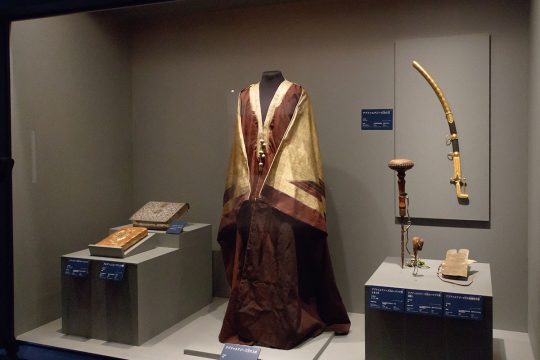
In the 5th chapter, which is the final chapter, we will introduce the founding of the Saud family and King Abdul Azith who won the current Saudi Arabian territory after three conquest activities, and the life culture of the modern Arab.
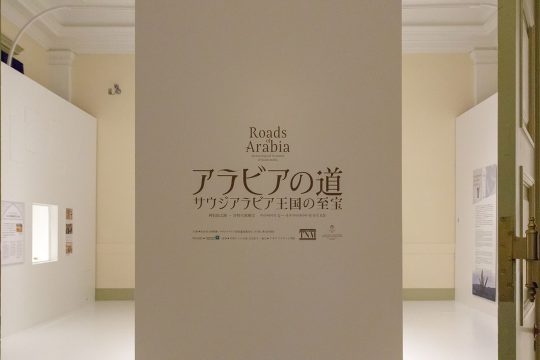
As you go back in time, you see something that turns your eyes towards the kingdom's past.
It means that the development of culture and civilization is exactly brought about by interaction between people and people.
Arabian peninsula which became "crucible (crucible)" of civilization by natural resources such as fragrance and spiritual strut called Islam. "Road of Arabia – treasure of the Kingdom of Saudi Arabia" is an attempt to trace its unknown roots with about 400 cultural properties.
The exhibition is from January 23 (Tue) to March 18 (Sun) in 2018.
Please come and visit the venue and enjoy the treasures of the treasures of Japan's first public release.
Outline summary is here
https://home.ueno.kokosil.net/en/archives/19815


